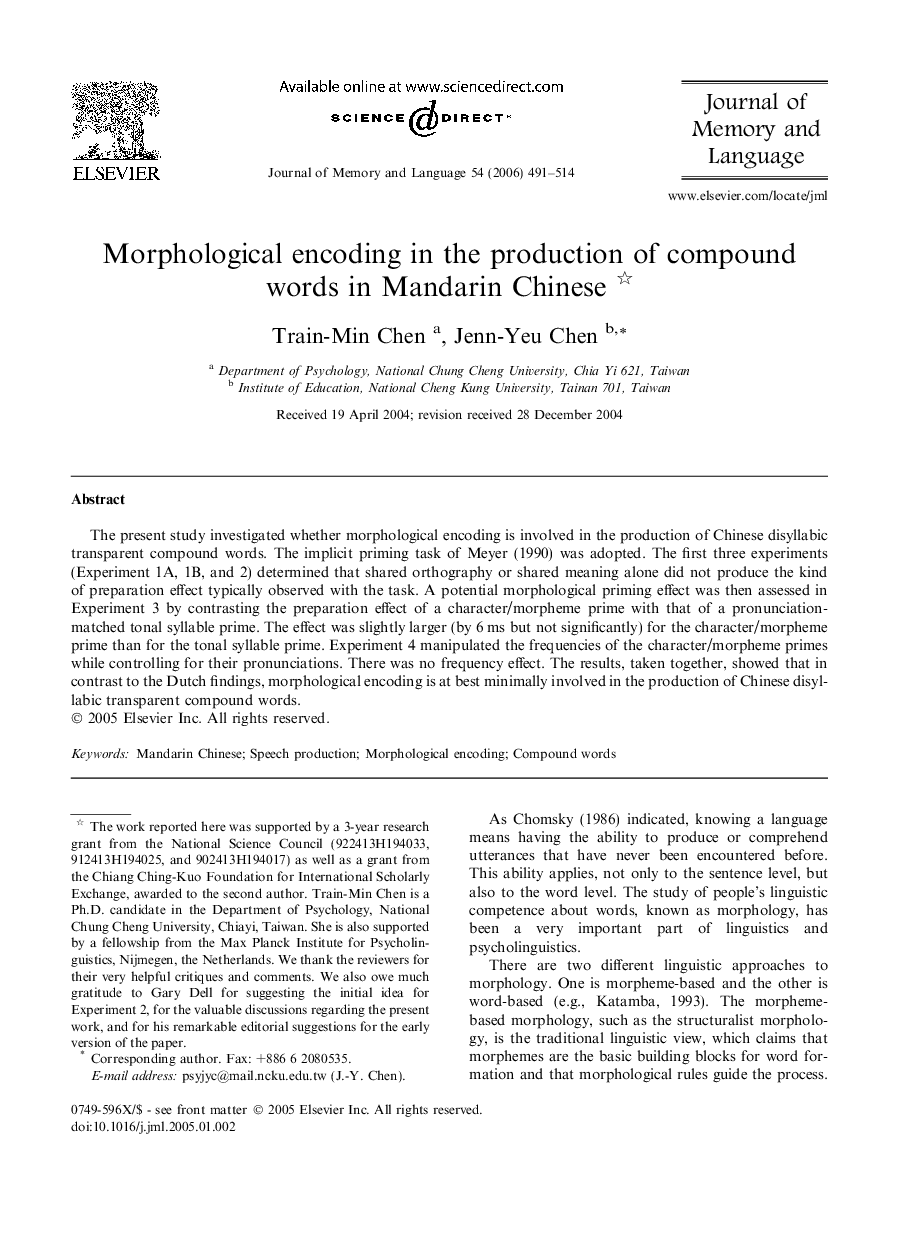| Article ID | Journal | Published Year | Pages | File Type |
|---|---|---|---|---|
| 932396 | Journal of Memory and Language | 2006 | 24 Pages |
The present study investigated whether morphological encoding is involved in the production of Chinese disyllabic transparent compound words. The implicit priming task of Meyer (1990) was adopted. The first three experiments (Experiment 1A, 1B, and 2) determined that shared orthography or shared meaning alone did not produce the kind of preparation effect typically observed with the task. A potential morphological priming effect was then assessed in Experiment 3 by contrasting the preparation effect of a character/morpheme prime with that of a pronunciation-matched tonal syllable prime. The effect was slightly larger (by 6 ms but not significantly) for the character/morpheme prime than for the tonal syllable prime. Experiment 4 manipulated the frequencies of the character/morpheme primes while controlling for their pronunciations. There was no frequency effect. The results, taken together, showed that in contrast to the Dutch findings, morphological encoding is at best minimally involved in the production of Chinese disyllabic transparent compound words.
